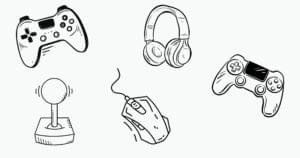Keep up to date on current trends and technologies
Web - Gaming

How Game Developers Detect and Prevent Modding and Scripting
SitePoint Sponsors
How to Build a 2D Tapping Game in Unity
Theodhor Pandeli
Building a Pong Clone in Unity: UI and Gameplay
Vincent Quarles
Retro Revolution: Building a Pong Clone in Unity
Vincent Quarles
Adding Pause, Main Menu and Game over Screens in Unity
Vincent Quarles
Developing 3D Games with Unity 5
Tanay Pant
Web APIs and the IoT in Unity
Patrick Catanzariti
Building Mobile Games with Stencyl
Jay Raj
Building Engaging Web Apps with Game Mechanics
Ignatius Teo
Using CSS Grid Layout and Blend 5 to Build a Game
David Rousset
JavaScript and the Wii U Browser
Colin Ihrig
Gaming: Battle on the High Seas, Part 1
Jeff Friesen
JS and HTMLGaming: From Angry Birds to ZX Spectrum
Tom Museth
Showing 13 of 13